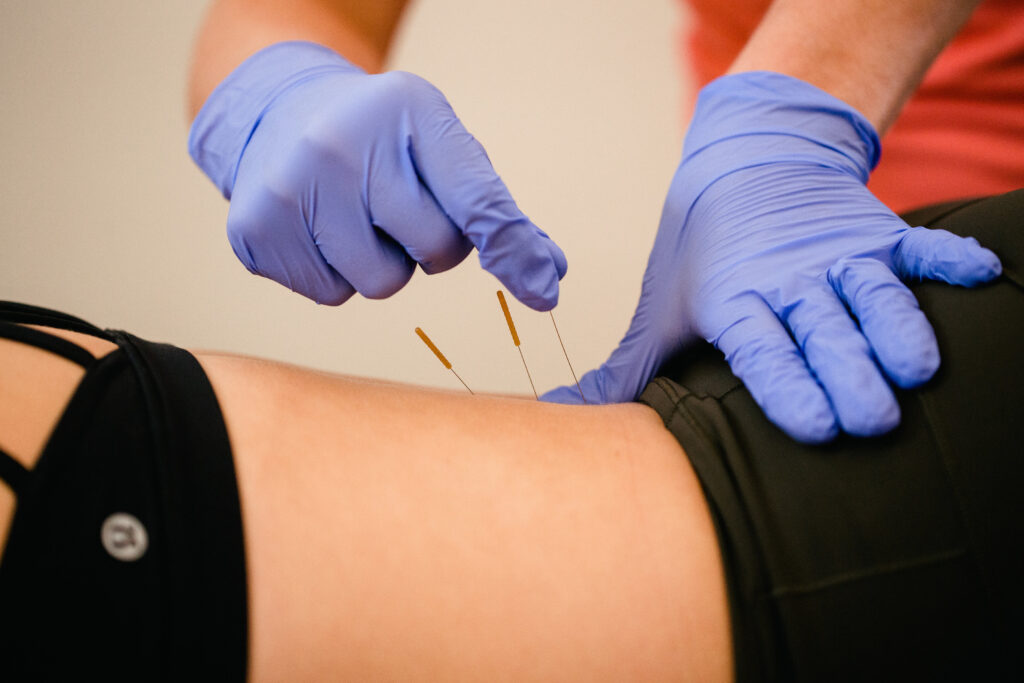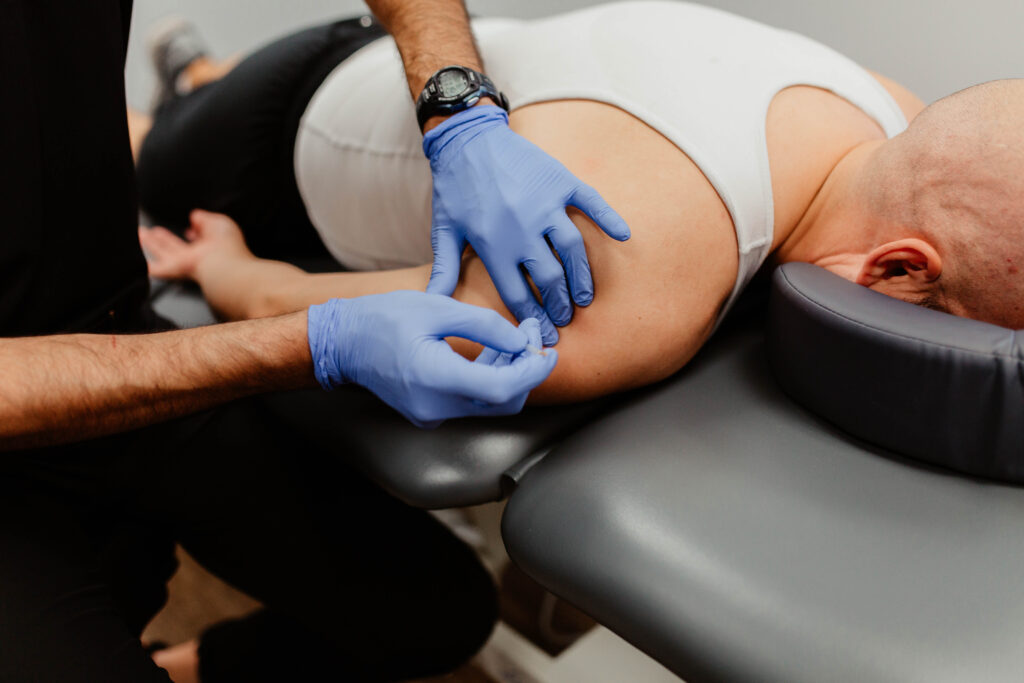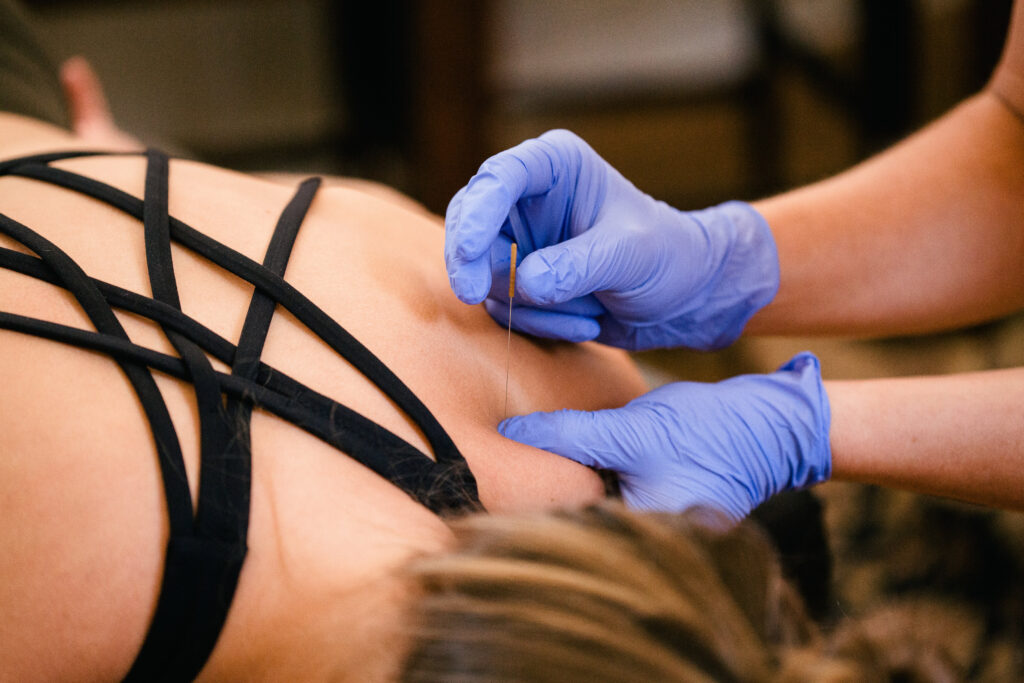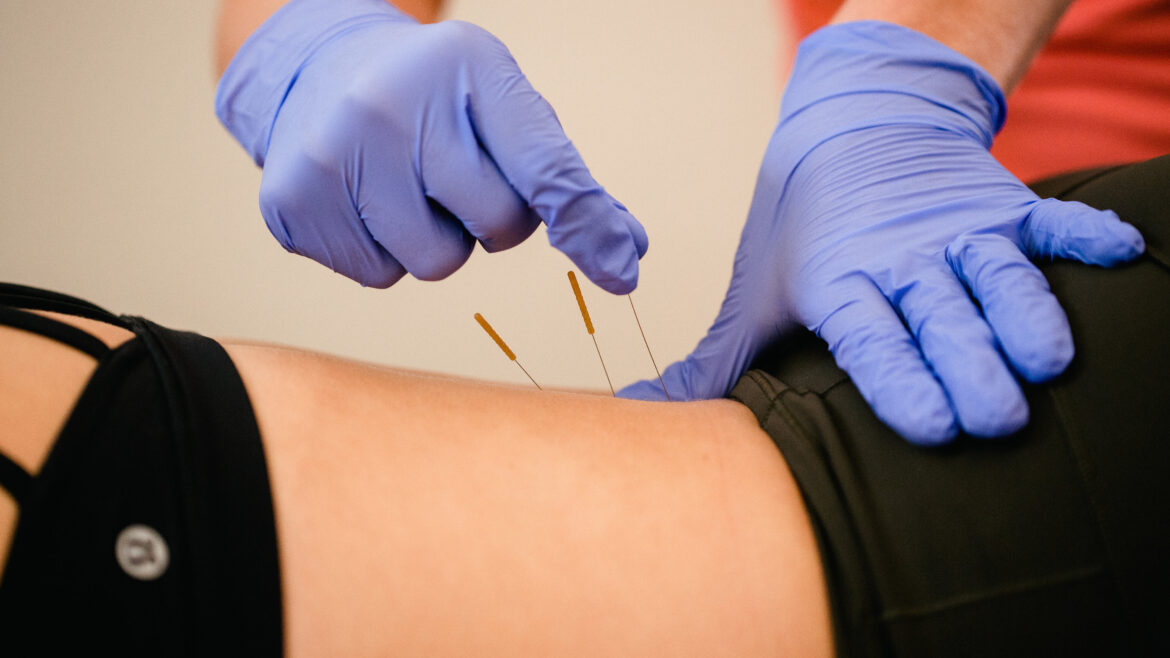Have you ever had a deep tissue knot in your shoulder or back? Or perhaps you’ve had a muscle strain or even a herniated disc that was causing you significant pain. Others may even experience nerve pain in parts of their body that physical therapy and exercise don’t seem to relieve. Rather than using different exercises or manual therapy to treat these problems alone, many PTs are turning to dry needling to help their patients recover faster and restore mobility to the body.

Dry needling can mitigate pain caused by a number of issues – arthritis, nerve pain, trigger points, ligament strains, headaches, muscle spasms, and more. Before we dive into the benefits of dry needling, though, let’s start with the basics of what dry needling actually is.
What is Dry Needling?
Dry needling can be used as a part of a comprehensive plan to help restore movement and function in the body. It’s a skilled practice that uses filiform needles to penetrate the skin and stimulate trigger points. A trigger point is a place of muscular dysfunction, causing pain and impacting mobility. They can be tender to the touch and difficult to eliminate as these tight bands of skeletal muscle can cause pain to permeate into other parts of the body.
How do trigger points form? Inflammation builds up in muscles that are injured or overused, causing tension and depriving the muscles of oxygen which occurs from the impaired blood flow. This causes the muscle to be taut, limiting normal movement of the muscle.
How Dry Needling Works
To perform dry needling, a PT will insert super-thin needles into the skin. The needles stimulate the myofascial trigger points, creating twitches and muscle reflexes. These reflexes decrease muscle tension, reducing irritation and pain while improving flexibility. This increases blood flow to the area to promote healing.
By using dry needling, a Doctor of Physical Therapy can target these areas and stimulate them in a way they can’t do with regular physical therapy techniques. It can be painless but most people say the cramping is more of the sensation which can be slightly painful for some. Some patients also report some soreness around the needle sites for around 24-48 hours, while others don’t feel any soreness.

Benefits of Dry Needling
By inserting needles into trigger points on the body, the muscles relax, boosting blood flow, diminishing inflammation, and triggering an immune system response. There are four specific benefits to dry needling:
Relief of pain
Looking for immediate pain relief? Pain improves as blood flow is restored, moving acidic wastes away from the muscle and providing those areas with oxygen and nutrient-rich blood. Many people report immediate relief after one session, but some do require additional sessions.
Improving mobility
When you have tight knotted muscles, the tendency is to stop moving and limit your mobility and movement to avoid pain. By combining dry needling with physical therapy, strength and mobility are restored and future trigger points can be avoided.
Quicker Recovery
Regardless of the injury or pain, restoring movement is the best way to heal and recover. While physical therapy can be the main component of treatment, adding dry needling to the treatment plan can help speed up your recovery time.

Assists with Chronic pain
Dry needling specifically helps with chronic conditions such as back or neck pain. This can result in trigger points and tenderness. Patients with chronic pain who have had dry needling report significant pain improvement. It helps to increase blood flow to these areas that are impaired and help improve mobility
Dry Needling vs. Acupuncture
While both dry needling and acupuncture use the same filiform needles, they are vastly different practices. Acupuncture is based on eastern medicine principles, and it’s focused on different points and meridians throughout the body. Needles are used superficially to assist with the flow of energy. Based on western medicine, dry needling inserts needles into a specific part of the muscle that is causing dysfunction and pain.
Is Pain Holding You Back?
Are you limited in mobility and function because of pain impacting daily activities? We can evaluate your movement, strength, and function to form a plan of care, whether that’s dry needling, PT, or home exercises, that can get you back to doing the things you love. If you are struggling with pain or an injury, our physical therapists can help! Start moving again with help from ResilientRx. Book a consultation online today!


